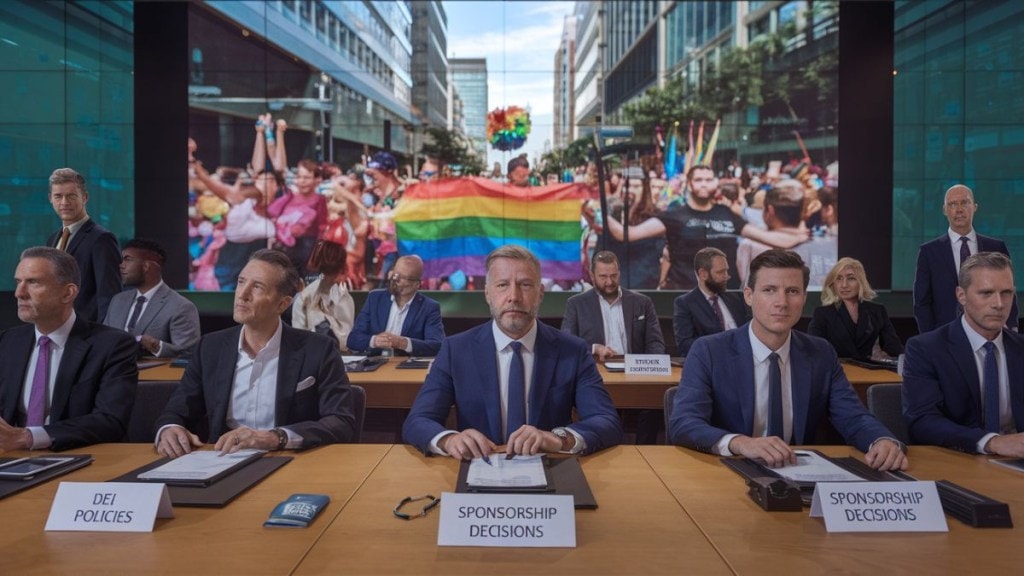The world is shaped by the people who live in it, yet not everyone is given the space to exist freely. While societies evolve, the idea of true inclusivity often remains out of reach. Every individual brings a unique mix of culture, beliefs, and experiences, yet the right to belong is still a privilege rather than a guarantee.
In a globalised corporate landscape, DEI has become more than a moral obligation—it’s a business necessity. In cosmopolitan workplaces, where people of different races, genders, and backgrounds collaborate, fostering inclusivity drives innovation, employee satisfaction, and consumer trust. Companies that embrace diversity create stronger, more adaptable teams that reflect the markets they serve. However, inclusivity, whether in gender, race, or identity, is often at the mercy of political and cultural shifts, making it a battleground rather than a given right.
In the U.S., newly elected President Donald Trump’s stance on gender identity has shockingly turned the tide against diversity, equality and inclusivity. Three key pillars of organisational structures across the world in recent years. Under his previous administration, opposition to gender-inclusive policies remained largely within the government. This time, the impact has extended far beyond, as major corporations have capitulated, marking a significant shift. During his election campaign, Trump positioned himself against DEI, calling it divisive and vowing to dismantle related initiatives. Upon taking office, his administration acted swiftly, rolling back protections and reinforcing a biological definition of sex. The corporate sector’s retreat from DEI now sets a precedent that could reshape workplace power dynamics, undermining equal opportunities for employees.
The dilemma for brands and businesses
The shifting political landscape poses a significant challenge for multinational corporations that have embraced gender-inclusive branding and policies. Companies like Google, Meta, X (formerly Twitter) and many others have previously positioned themselves as supporters of diversity and inclusion. However, with potential regulatory shifts in the U.S., businesses face a complex strategic decision: adhere to stricter gender norms or maintain inclusive messaging at the risk of political and consumer backlash.
“If the U.S. government enforces policies that limit gender-inclusive language and practices, major corporations may be compelled to adjust their advertising, employment policies, and corporate messaging. The impact could extend beyond U.S. borders, influencing brand strategies in regions like India, Europe, and Latin America, where inclusivity remains a growing but sensitive subject,” a senior brand analyst on condition of anonymity said.
Several brands have embraced gender inclusivity and actively support the LGBTQIA+ community through their Pride collections and ongoing initiatives. TomboyX, a queer-founded brand, offers gender-inclusive underwear and donates to LGBTQ+ nonprofits year-round. Calvin Klein partners with organisations like the Transgender Law Center and ILGA World, supporting LGBTQ+ rights globally. Adidas collaborates with LGBTQ+ athletes and allies, launching Pride collections that benefit Athlete Ally, an organisation advocating for inclusion in sports. Reebok contributes to LGBTQ+ youth programs, while Bombas donates essential clothing items for every purchase from its Pride collection. Skittles supports GLAAD through donations linked to its Pride Pack, and Pura Vida donates a portion of its sales to The Trevor Project, aiding LGBTQ+ youth.
Recently, Meta and Google pulled out of sponsoring the 2025 Sydney Mardi Gras, one of the world’s largest LGBTQIA+ pride events, known for its vibrant parade and advocacy for LGBTQIA+ rights, aligning with their shift away from DEI (Diversity, Equity, and Inclusion) commitments in the US.
However, Meta has previously emphasised the importance of representation and community for LGBTQ+ individuals, encouraging them to use its platforms for self-expression, support, and advocacy. Google, through its philanthropic arm Google.org, has also positioned itself as a supporter of LGBTQ+ inclusion, committing $4 million in cash, Ad Grants, and resources such as tools, training, and volunteer support for LGBTQ+ businesses and organisations impacted by the Covid-19 crisis.
(BrandWagon Online reached out to Meta, Google, and Deloitte for comments, but had not received a response at the time of publishing this story)
Potential repercussions on marketing and sponsorships
One of the biggest concerns for brands is the future of LGBTQIA+ sponsorships and Pride campaigns. Over the years, many global brands have actively supported Pride events, collaborated with LGBTQIA+ influencers, and incorporated gender-neutral products into their portfolios. However, increased political scrutiny in the U.S. could lead some companies to scale back their involvement in such initiatives, fearing economic or legal consequences. “Without commenting on the gender policies of the land, I believe creativity thrives under constraints and this could be a major shift. No brand wants to challenge the law outright; they adapt and manoeuvre around it. Sponsorships will likely take a hit. But the real cost won’t be borne by brands. It’ll fall on those who’ve always had to fight the hardest,” Shubham Gune, an advertising expert and founder, Hinglish, said.
At the same time, experts believe that pulling back from gender-inclusive campaigns could alienate younger, progressive consumers who expect brands to take a stand on social issues. Gen Z and Millennials, who prioritise inclusivity and diversity, may respond negatively to brands that are perceived as retreating from these values. Striking a balance between navigating regulatory challenges and maintaining consumer trust will be a critical test for companies moving forward.
However, industry experts assert that as the debate over gender identity intensifies, brands must carefully evaluate how they position themselves in different markets. In countries where inclusivity is legally protected and widely accepted, businesses may continue to promote gender diversity without hesitation. However, in regions where governments impose restrictions, companies might be forced to adopt more neutral or localized strategies to comply with regulations while still upholding their brand values.
However, industry experts assert that as the debate over gender identity intensifies, brands must carefully evaluate how they position themselves in different markets. In countries where inclusivity is legally protected and widely accepted, businesses may continue to promote gender diversity without hesitation. However, in regions where governments impose restrictions, companies might be forced to adopt more neutral or localized strategies to comply with regulations while still upholding their brand values.

